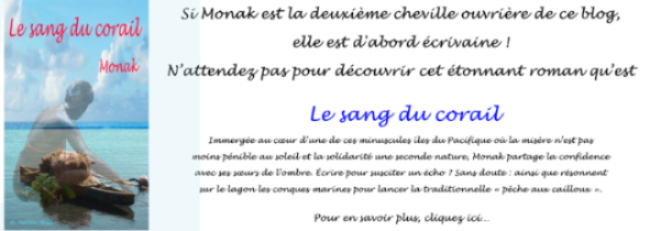 |
A clothing symbol for Tahiti and its islands
Just as the blue lagoon or the beautiful vahine, the
pareo is inseparable from the Polynesian dream…
Like mana, taboo and some
other terms from the Polynesian language, pareo
went around the earth. This magic world, reminiscent of Tahiti and its vahine, is now part of the World
Heritage. In French Polynesia,
it is beyond the modes, beyond the genders and social classes. The pareo is
beyond time, simply.
 |
| Pareo on market of Papeete in Tahiti |
The
pareo is the garment in its simplest and purest expression.
From ancestral
grass skirt to modern pareo
Polynesian’s loincloths,
before Western people’s arrival, were made of tapa, a vegetable fiber derived from the bark of certain trees or
shrubs, softened by soaking and by cold-hammering and used as a fabric.
These ancient pareo were
decorated with geometric figures and floral motifs, freehand or by using
woodcuts matrixes. Natural pigments originate from colored clays or plant
extracts.
At the end of the nineteenth
century, the European cottonades have immediately marveled the Polynesians and
reflected modish tastes. It should be noted that at the same time, in
Polynesia, the home-made tapa was prohibited by Westerners.
 |
| A couple wearing pareo, above its street clothes |
Today, a pareo is a
lightweight fabric coupon of about 1.80m / 1.10m.
Designs and colors quickly
symbolized the archipelago which had adopted them. But beware: if the flowers
came from Hawaiian shirts, the pareo is no doubt Tahitian.
Pareo and
globalization
The fame of pareo goes far
beyond the borders of French Polynesia: it’s present in the South Pacific, from
Fiji Islands to Rapa Nui (Easter Island).
In the wake of
globalization, local artisans are copied by manufacturers of highly
industrialized countries in the field of textiles. This phenomenon tends to
standardize the production, much to the distress of the tourists cruise,
sailing from Fiji to Tahiti, who must make do with the same models… One
variant: the price!
 |
| A man wearing pareo for the Heiva in Tahiti |
Thus, the same pareo,
usually made in Bali, is sold in markets there up to 15 times cheaper than in
Papeete market of Tahiti: transport costs, taxes and wage level require…
Pareo, trendy
or beyond the modes?
Make no mistake: if the
pareo is not pants or a dress or a skirt or even a loincloth, it’s more than
that. Indeed, it performs all these functions at once. It folds to the desire
of the one who wears it.
 |
| Pareo fits all desires and all situations |
Much more than a garment, it
serves as a beach mat, wall hangings and bedspreads at home, car seat covers
and many other things…
Anglers of chevrettes (shrimpers) in fresh water
streams tighten it to the waist and use it as a dip net. On weekends, the roads
are lined with pareo banners tied outside the fare to indicate that the feast or any other event is there.
 |
| Carrier of fruit and vegetable in pareo at Tahiti |
Up to its last few days in
the hands of vahine, the pareo, cut
into squares, is used to press the coconut pulp and extract the milk.
All the splendor of the fenua, the Polynesian earth, is
represented on this wonderful garment: bright flowers, sparkling fishes,
mountains and lagoons of the Polynesian islands. They display tattoo designs,
as well as maps of the islands and atolls with names of heavenly dreams.
Whatever the time, the pareo
is always in fashion. From one to the other, they are adorned with fringes,
embroidery, enriched with sequins and tinkling with every movement..
Wear a pareo:
an art
The pareo is unisex.
The men used to tie it like
shorts that allow them to swim or climb coconut trees to seek the precious
nuts.
 |
| The pareo is pretty or sexy in Tahiti? |
Women suit pareo at all
times of the day and even when the cool evening arises.
There are multiples ways to
get drape. Many books are devoted to this delicate operation.
The pareo may be tight
around the waist, draped and knotted around the neck, bare back, fastened on
one shoulder and ending as a long dress. The coquetry and ingenuity are
endless.
The art of wearing
pareo in all its forms
But beware: it’s tied
without loop, without pins, no system of any kind. It is tight and adjusted
according to the movements during the day. It’s sorely tested when night comes
and the whole energy is devoted to party and to its devilish tamure.
In French Polynesia, there
is not one house, not a person who has in one’s wardrobe some pareo as an
integral part of the lifestyle.
Artists and
pareo
Paintings, photographs,
postcards put it always in the spotlight as it is present in the Polynesian
daily, evocative of comfort and well-being.
 |
| Vahine wearing pareo by Gauguin |
Whether it is Pierre Loti
for literature or Paul Gauguin for painting, many artists have described or
painted pareo, that it’s intertwined it deeply with the myth of vahine.
An article of Richard Lévy-Bossi
Translated from French by Monak
To visit one of the last pareo
factories in Tahiti:
Glossary :
Chevrette: freshwater shrimp
Fare: Polynesian house
Heiva: annual festival
celebrated in July
Tamure: Tahitian dance
Tapa: plant fiber fabrics
Vahine: woman
All rights reserved
to Richard Lévy-Bossi and Julien Gué (for photos). Ask permission of the
copyright holder prior for reproduction of text or images on the internet or
any other medium.


Aucun commentaire :
Enregistrer un commentaire
Cet article vous a fait réagir ? Partagez vos réactions ici :